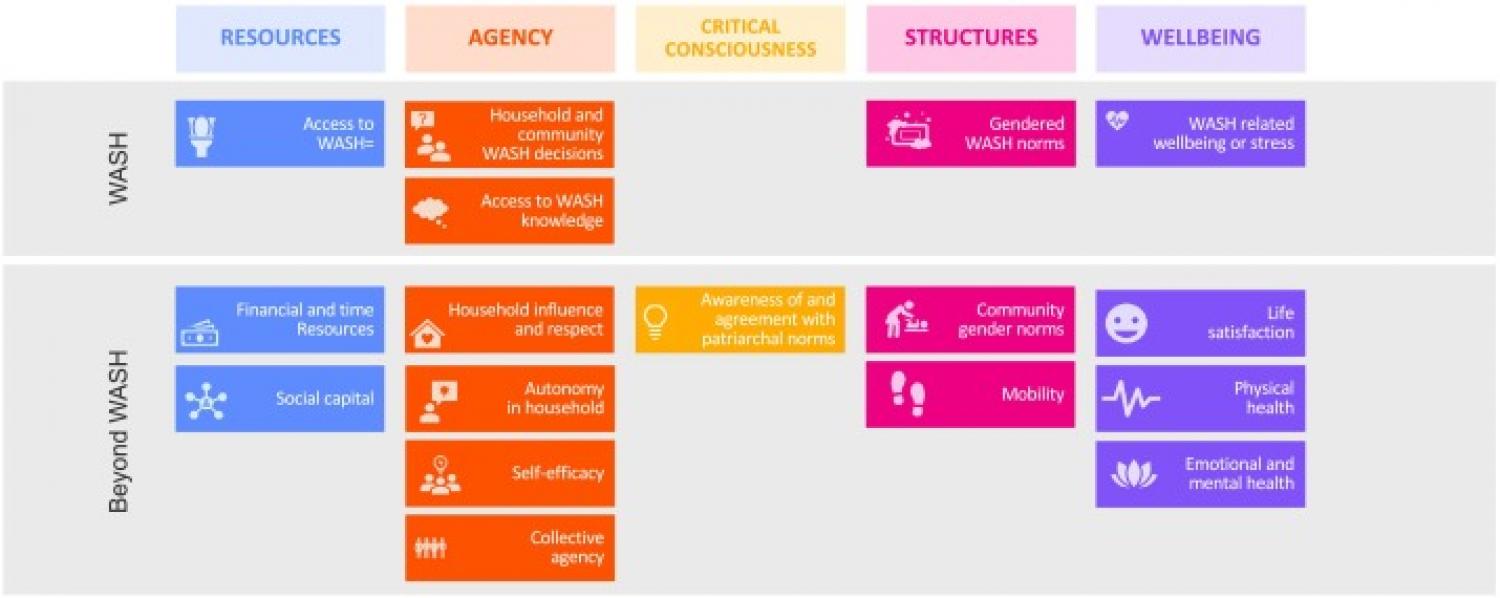
Multiple established connections link access to safely managed water, sanitation and hygiene (WASH) and gender equality. As development actors seek to attain the fifth and sixth Sustainable Development Goals, the need to measure WASH programs' contributions to gender equality outcomes is increasingly pressing. Yet the measurement of such outcomes remains challenging. This article describes and justifies the theory, concepts and decisions that underlie a recently developed quantitative measure of gender equality in WASH — the water, sanitation and hygiene gender equality measure (WASH-GEM) — and outlines key tensions navigated in its development. We developed the WASH-GEM through a collaborative, iterative process informed by a feminist perspective, critical review of relevant literature, pilot implementation and partner engagement. We report on five design considerations critical for the robust design of quantitative measures of social change: conceptual framing; measurement focus; measurement context; sectoral scope; and evaluative scope. We also define the WASH-GEM's five domains of measurement: Resources; Agency; Critical consciousness; Wellbeing; and Structures, and discuss how we balanced theoretical integrity with practical application and relevance to WASH. In reflecting on the WASH-GEM design, this article contributes to a critical discourse on methodological challenges and imperatives in the measurement of complex social change.
